The Alliance’s Sustainability Impact Report, released this week in celebration of Earth Day, shows how the animal agriculture community shares the same values as today’s consumer with its never-ending commitment to animal care, environmental stewardship, responsible antibiotic use, food safety, and nutrition. Here are just a few environmental highlights from each area of animal agriculture featured in this year’s report!
Dairy:
The dairy community is a key part of the solution to the sustainable nutrition challenge—that is, the dual need to ensure food security and nutrition for a fast-growing global population while reducing the environmental impacts of agriculture. Dairy foods are nutrient-rich and accessible, and farmers are committed to responsible and sustainable production. Here’s a look at how:

- The dairy community has made huge strides in environmental progress. Thanks to innovations in farming practices, the carbon footprint of producing one gallon of milk shrunk by 19% between 2007 and 2017, requiring 30% less water and 21% less land!
- For generations, U.S. dairy farmers have used progressively fewer natural resources to produce milk. While it has been estimated that U.S. dairy accounts for approximately 2% of total U.S. greenhouse gas (GHG) emissions, the dairy community is committed to conserving natural resources and further reducing its environmental impact.
- Research has found that feeding byproducts to cows decreases GHG emissions by more than 4.5 times compared to composting and 49 times compared to landfill disposal.
Beef:
The beef community is committed to continuous improvement in environmental stewardship and sustainability. Farmers and ranchers continue to implement new technologies and strategies to reduce their impact on the environment and ensure that their animals are being raised responsibly. For instance:
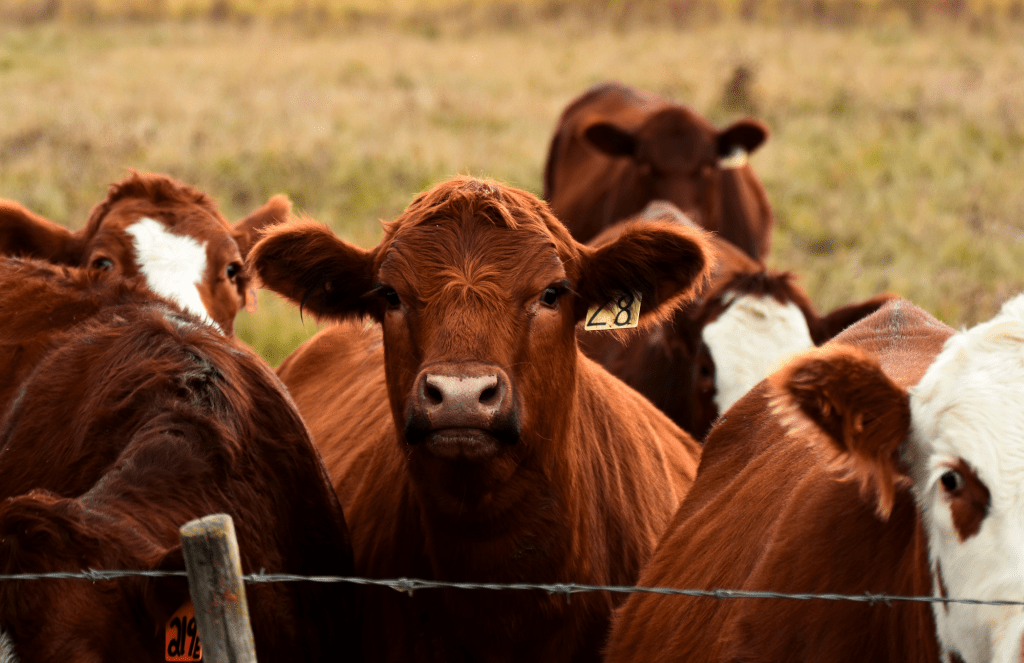
- The U.S. has been a global leader in beef production with the lowest carbon emissions per kilogram of beef in the world for the past 25 years. This allows the U.S. to produce 17% of the world’s beef with only 6% of the world’s cattle!
- Cattle help with food waste by acting as “upcyclers” in our food system, eating grass and unusable byproducts like the left-over distilled grains created during biofuel production and turning them into nutrients that we can digest.
- Beef cattle are able to provide ecosystem services, or benefits we receive from the ecosystem, to the land these cattle are raised on, including providing wildlife habitat and increasing plant diversity.
Pork:
The pork community is committed to managing farms and facilities in the most environmentally responsible way possible. Conservation, recycling, land management, water quality, air quality, and manure management are areas of priority for pig farmers for continuous improvement. Here are some highlights:
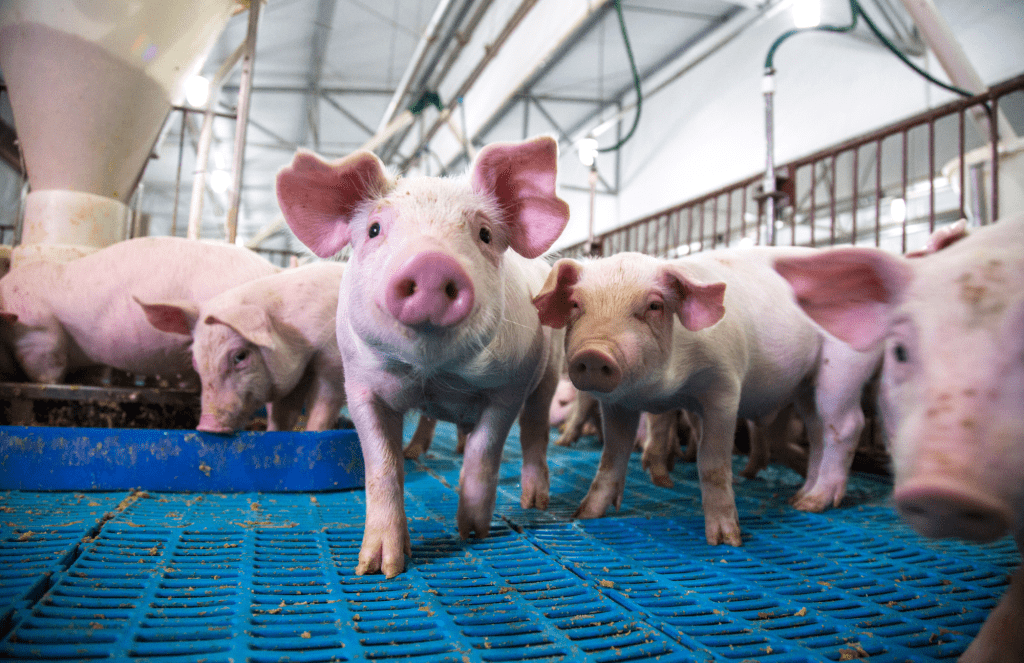
- The relative contribution from pork production to the overall national greenhouse gas inventory is extremely small, at less than 0.3%.
- By 2030, the U.S. pork community has pledged to reduce greenhouse emissions 40% from a 2015 baseline!
- Some farms are already carbon neutral or negative! Farmers are increasingly using renewable energy sources, including methane digesters, wind turbines, and solar panels, to power their farms, decreasing their overall energy use.
Chicken:
America’s broiler chicken companies and the 30,000 farm families that raise broiler chickens are committed to the responsible production of food that is safe, affordable, and abundant for consumers in the U.S. and around the world. The chicken community is more diligent and innovative than ever in pursuing environmental improvements. Here are some examples:
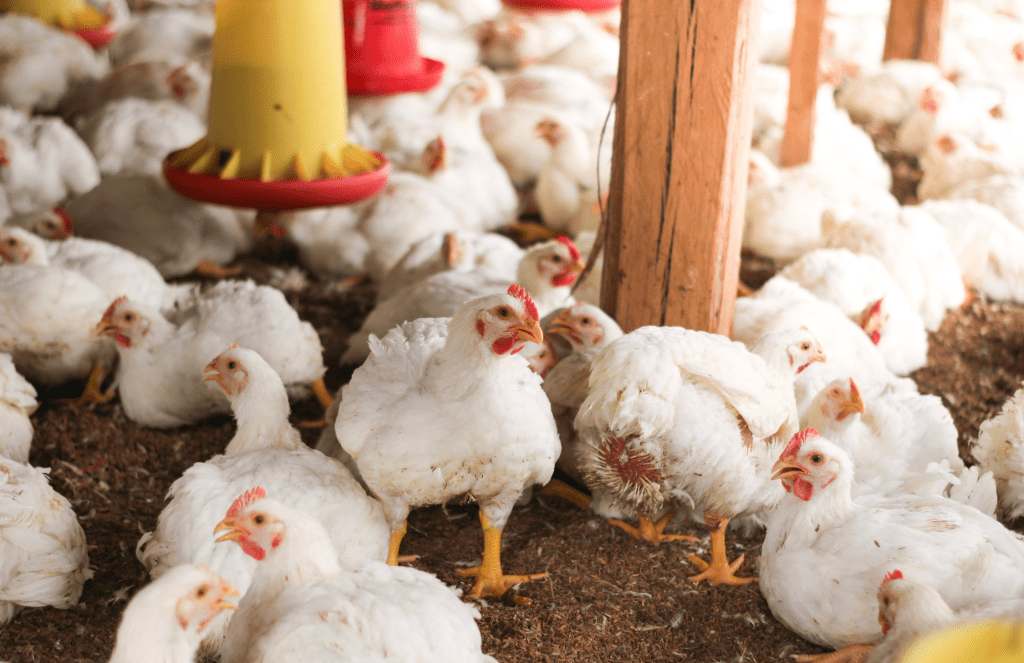
- Over 95% of poultry litter from chicken houses is recycled to fertilize crops!
- Energy-saving innovations, such as solar panels and LED lights, and water-saving tools like cooling pads, help chicken farmers limit the environmental impact of running a successful farm, all while benefiting the overall wellbeing of their flock.
- The chicken community reduced its GHG emissions by 36% between 1965 and 2010, and an additional 1% between 2010 and 2020.
Eggs:
The egg community has made great strides in environmental stewardship over the years and is always working to continuously improve their practices to become more efficient and environmentally-friendly. Some of the progress made so far includes:
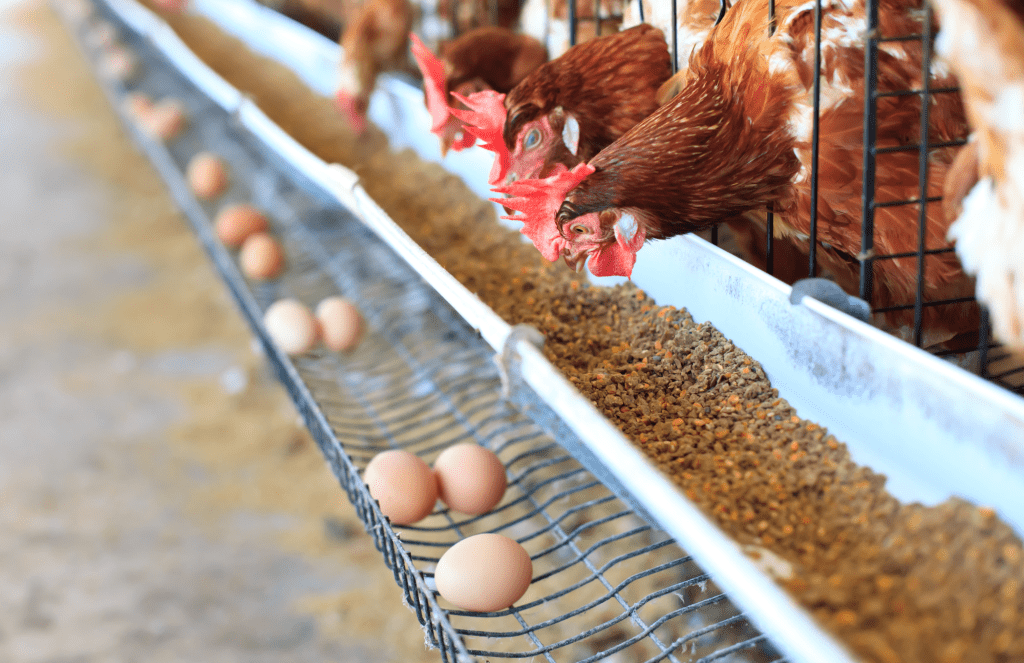
- Today’s hens are living longer and producing 27% more eggs per day because of better health, nutrition, and housing. Despite producing more eggs, they are using less than 50% of the feed it took to produce a dozen eggs in 1960.
- Compared to 1960, egg farmers have a 71% lower carbon footprint today.
- The amount of CO2 reduced by egg farmers since 1960 is equivalent to taking 5.2 billion cars off the roads for a year!
Turkey:
Turkey farmers make sure their birds have a healthy living environment inside the barns while also taking care of the land outside of the barns. Using modern technology helps them to provide safe, affordable, and healthy foods to feed families across the world. Examples include:
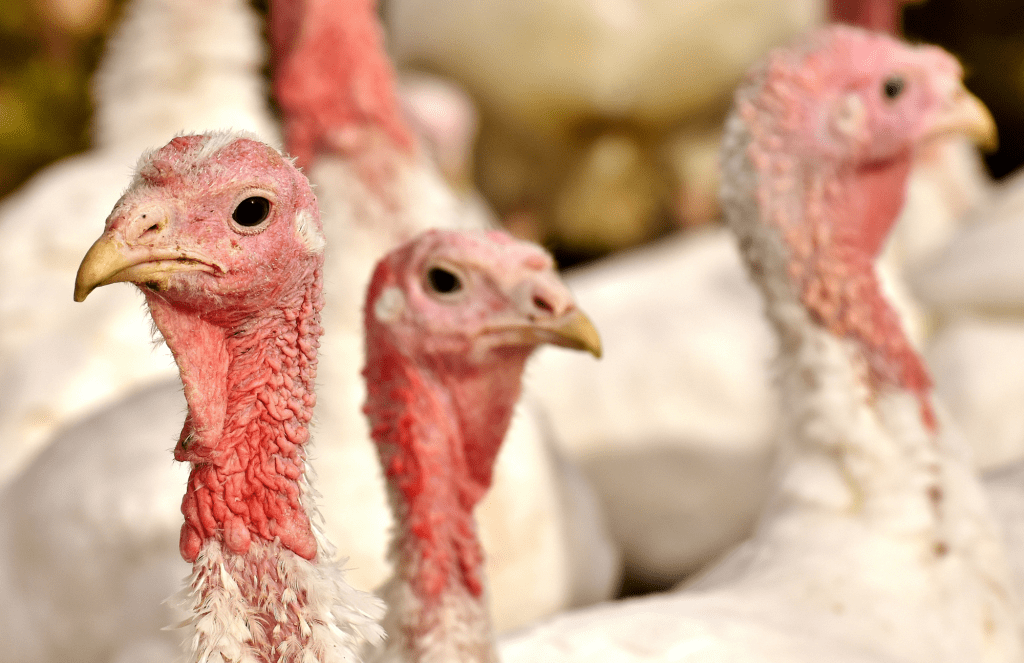
- Improvements in genetics and nutrition that have helped turkeys grow healthier and reach market weight faster – using fewer resources!
- It once took 29 weeks for a tom turkey (male turkey) to reach a live weight of 35 pounds. Today, the turkey tips those scales in just 18 weeks, reaching 38 pounds.
- Farmers recycle turkey litter as organic fertilizer for nearby soybean and corn fields. This corn and soybeans could eventually become turkey feed.
Sheep & Lamb:
Sheep farmers are dedicated to not only their animals but the environment in which they raise them as well. Sheep’s natural grazing skills bring many benefits to the environment in which they live. For example:
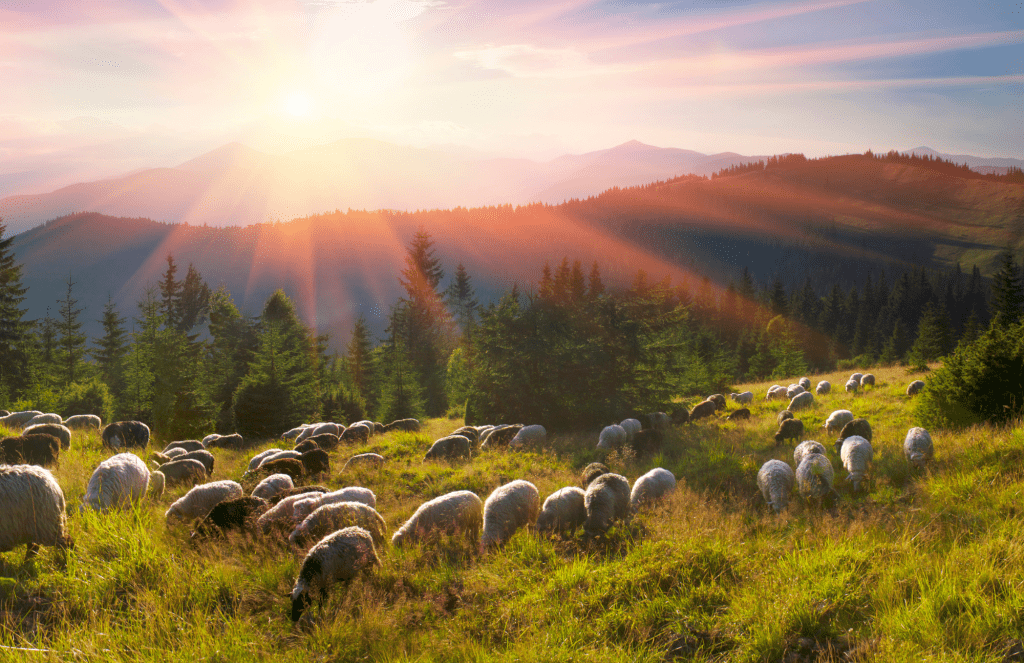
- Sheep naturally control weeds, which helps to prevent wildfires and manage noxious weeds. They can also eat plants that are toxic to other livestock.
- They improve land quality by recycling nutrients back into the soil, minimizing erosion, and encouraging native plant growth.
- Sheep enhance wildlife habitats through foraging which helps create and maintain biological diversity.
Seafood:
Experts agree that the future of sustainable seafood must involve both farm-raised and wild-caught fish. Sustainable seafood is seafood caught or grown in a manner that satisfies the nutritional needs of the current generation without reducing the ability to satisfy the needs of future generations. Here’s how the aquaculture community is doing it:

- Shellfish, like oysters and clams, improve water quality and protect other organisms in their ecosystem by feeding on phytoplankton and nutrients.
- Shellfish can also act like reefs, providing habitats and protection for other organisms such as juvenile fish, crabs, and lobsters.
- Fish farmers are continuously working to use water efficiently, make sure their farms are environmentally-friendly, and that when water is used to grow the fish and returned to streams and rivers, it is returned cleaner than when it entered the farm.
Animal Feed:
Every sector of animal agriculture is on a continuous journey to reduce its environmental impact – and that includes the farmers and ranchers growing products used for animal feed.

- Between 1980 and 2015, corn farmers have reduced their land use by 41%, soil loss by 58%, greenhouse gas emissions by 31%, and irrigated water use by 46%.
- During that same time, soybean farmers have reduced their land use by 48%, soil loss by 34%, greenhouse gas emissions by 43%, and irrigated water use by 60%.
- In 1980, 86% of all U.S. domestic-use corn was fed to livestock. In 2015, roughly half of that amount was fed to animal agriculture.
With a rapidly increasing population, farmers, ranchers, veterinarians, animal nutritionists, animal health companies, and everyone in the animal agriculture community is uniting to produce more food with fewer resources. This means agriculture is a key player in moving our nation towards a greener tomorrow.
Ignoring the benefits of animal protein in diets or the tremendous strides that the animal agriculture community has made in reducing the impact on the environment is both a disservice to consumers and America’s hardworking farmers and ranchers. This is not a time to point fingers but a time to ensure our future generations have the luxury of a sustainable food system and planet. The animal agriculture community’s track record in continuous improvement has earned them a seat at the table.
Find out more about animal agriculture’s sustainability journey in our Sustainability Impact Report!
All posts are the opinion of the author and do not necessarily represent the view of the Animal Ag Alliance.







